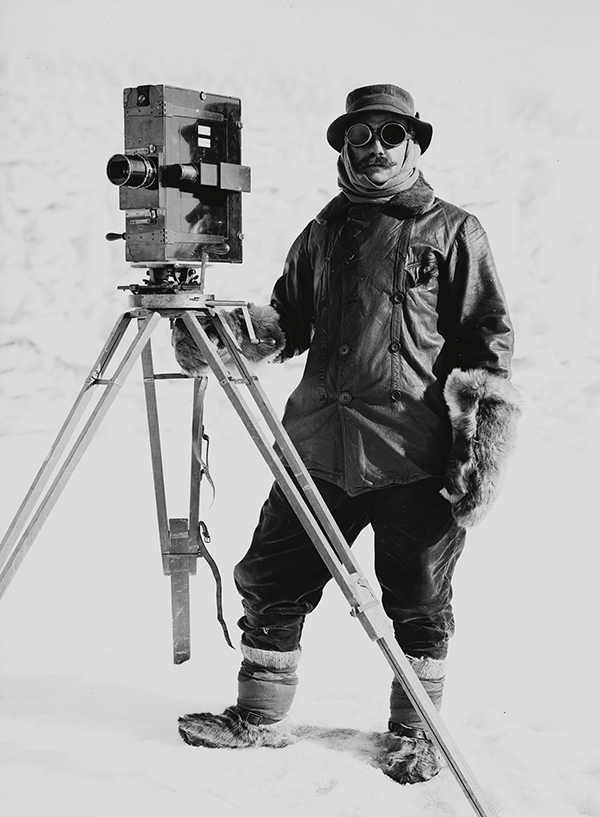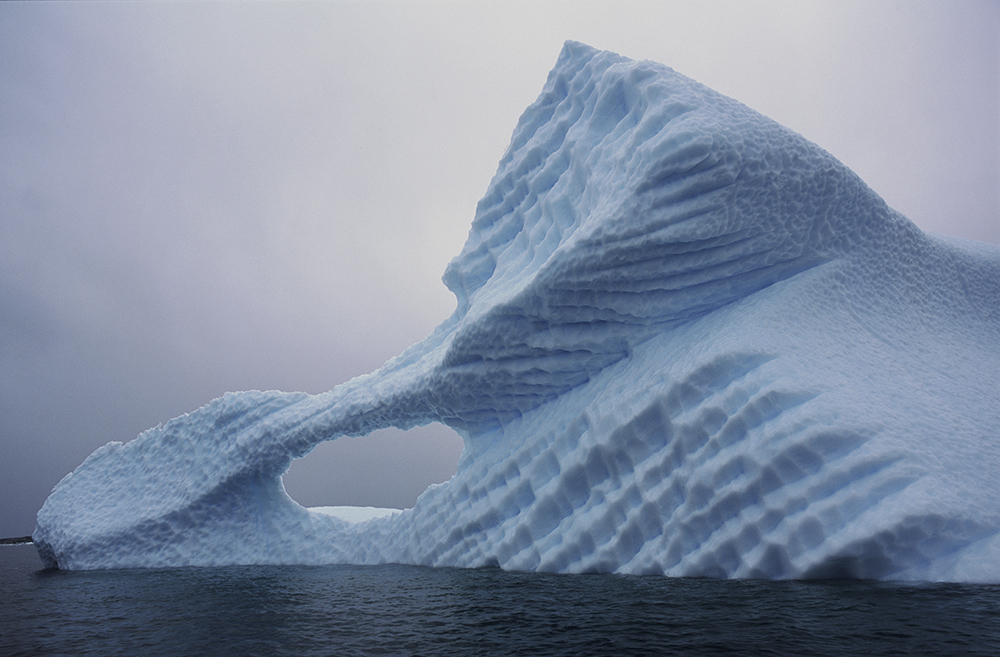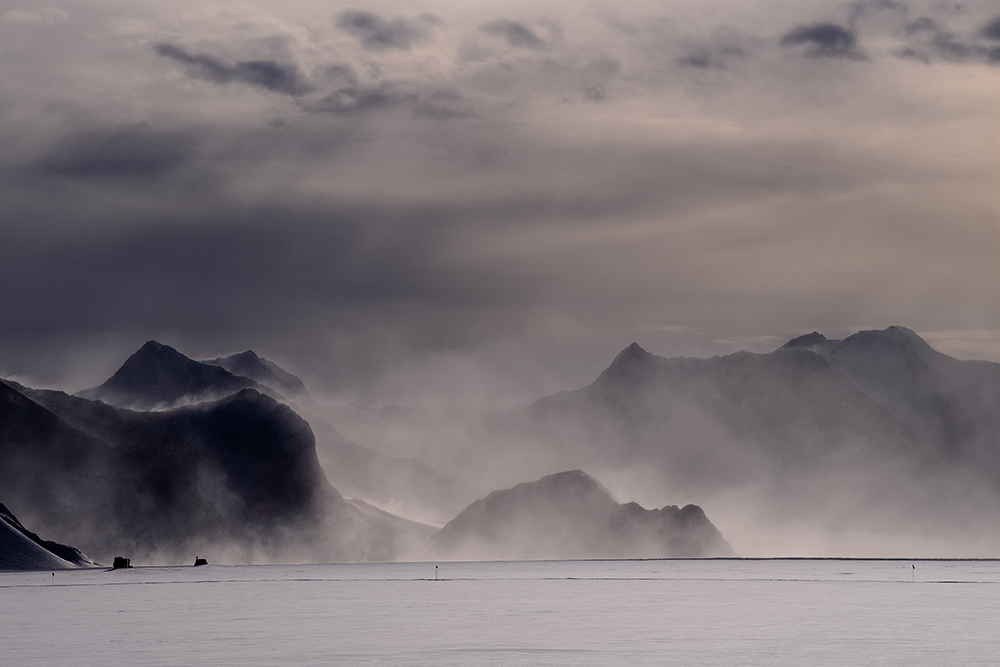I have spent 25 years or so visiting both polar regions on photographic assignments or expeditions, and speaking to audiences of all shapes and sizes, ages ranges, and experiences and all academic levels. One thing remains consistent, that Antarctica is far more at the front of people’s awareness than the Arctic, more specifically the Arctic Ocean.
A historical perspective

The reason for this is that Ernest Shackleton and Captain Scott recognised the value that professional photography would bring to highlight the experiences of the expedition in this unexplored region of the world. It is the photography of these two expeditions in particular that drew people’s attention to Antarctica and the South Pole. History was made in 1912 when Captain Scott’s men perished on their way back, only ten miles from a food depot, when they starved to death in a storm. Shackleton’s 1915 expedition became infamous because of a tale of heroic survival against all odds. Both expeditions had professional photography to support these two different stories. It is exploration photography that put Antarctica ‘on the map’ . The Arctic Ocean by contrast is still to this day mostly unknown in the public eye. There are no truly memorable expeditions that made news headlines or that forged a path into the minds of adults and children through books.
Wally Herbert’s gigantic 18 month crossing of the Arctic Ocean in 1969, was a seriously Herculean achievement that to this day remains mostly unknown. This is because his expedition had to compete with the Apollo 11 Moon landings, a relative expedition PR disaster. Scott and Shackleton’s expeditions fired up the imaginations of that Victorian generation and today it is the nostalgia of those early ‘Explorers’ that still spark interest globally of Antarctica and the ‘golden age of exploration’. It is thanks to Herbert Ponting (above left), Captain Scott’s photographer, and Frank Hurley Shackleton’s photographer that we can wallow in the warmth of nostalgia from that period. Photography is the greatest mechanism for creating the sentimental longing for an era in the past, especially when the imagery is the first of a previously documented world.
The Arctic Ocean does not have a presence in our minds, it remains almost unknown to the general population, apart from Russia, hardly surprising as one fifth of its landmass lies North of the Arctic Circle. In 2007 a Russian expedition led by Artur Chilingarov dropped a flag on the seabed directly beneath the North Pole, in an attempt to claim half of the Arctic Seabed, a political and highly symbolic claim to the energy riches of the Arctic Ocean. This was the start of a new ‘cold war’, one that is still going on today.
The drivers of climate change



The loss of sea ice at both ends of our planet is the driving force of global weather change, and still Antarctica steals the limelight away from the Arctic Ocean. Almost weekly we see headlines of Antarctic Ice sheets breaking up, and huge icebergs breaking away and drifting off into shipping lanes, penguins being marooned because they can’t get out to sea and huge glaciers the biggest on earth retreating or slipping into the Southern Ocean and heatwaves described by the media as ‘giant airborne rivers of heat’ snaking across the continent, and so on. Meanwhile the Arctic Ocean is quietly melting away unnoticed by all but the scientists who study it via satellite.
The reason for this news / information ‘blackout’ is, there are almost no photographs of the Arctic Sea ice, except those taken from the bow of tourist ships in summer, when the annual summer melt is happening. The usual symbol for the Arctic and climate change is a photograph of a rather forlorn looking Polar Bear standing on a lump of ice surrounded by water. Despite this being normal it is this kind of image that has the ability to tug on our heart strings. A photograph of a piece of ice will only become important when it is the last piece of ice. But photography is able to step in at this point as climate change, global weather change is happening now and the effects of that are seen worldwide, increased flooding in major cities, bigger more violent forest fires in Europe, Australia and North America, landslides taking out huge areas of major cities. snowfall in places where isn’t normally any and lack of rainfall in places where there used to be plenty.

Photography is climate change communication
Photography of these global disasters has become the language of communication that we use to first to show the horror and devastation to human life. The dramatic aftermath of these sudden major events offer photographic opportunities in abundance for the media. It is the slower moving, but equally tragic, huge environmental changes that are difficult to capture. Receding glaciers, meltwater run off, melting sea ice in the Arctic Ocean all of these events are occurring places that are close to inaccessible and expensive to get to, and in the case of the Arctic Ocean, where some of the biggest changes are taking place that are affecting everyone on earth, it is expensive, dangerous and logistically complicated to get in and out of. Antarctica on the other hand is relatively easy to get to, by boat or by plane.



4000 people live in Antarctica through the year and around 1000 live there in the winter, 200 of those living at the South Pole. It is possible to buy a “champagne flight” from Cape town to the South Pole and back over a weekend” last year 170,000 tourists visited in Antarctica. From a news perspective, getting images from Antarctica to show these major events is relatively easy. The Arctic Ocean by contrast, has no one living at the North Pole at any point in the year and no permanent scientists living on the coast line year round. And only a few dozen tourists visit the Arctic Ocean by boat each summer.
A better understanding of the Arctic
The Arctic is often perceived as being, remote and disconnected from the rest of the world. It is not. Everything from rainfall to ecosystem changes, to finance and to global health is directly connected to the sea ice of the Arctic Ocean. Today sat at my desk writing this, or anything in fact, I am never far from the Arctic Ocean. It seems to live inside of me, in the same way as a first love, or any love for that matter. My relationship to the Arctic Ocean has become intimate as my understanding of its role within our climate systems has grown.



The global public understanding of the importance of the sea ice and its affect on us within our day to day lives has never existed. 90% of the human population live in the Northern Hemisphere and our weather is largely dictated by the climate on the surface and beneath the Arctic sea ice. Once we all understand this connectedness to the sea ice we will perhaps love it in the same way that anyone who has been there does, until that happens, the sea ice doesn’t stand a chance, from that point nor do we.

This series – The world is likely to pass a dangerous temperature threshold within the next 10 years, and as it does basic components of the Earth system will be fundamentally, irrevocably altered. Heat waves, famines and infectious diseases could claim millions of additional lives by century’s end. What we do in this next decade may well affect how our earth’s environment for millions of years. Check out BBC Earth series for an overview and insight. In this series of essays about earth and its climate, we’ll look at different environments and how they are being affected by rising global temperatures. We‘ll also search out the views of scientists and photographers who are engaged in conservation photography and explore what drives them to do what they do and why we should pay attention to their stories. Next episode: Climate change now ahead of COP28
If you’d like to listen to our Newton & Coe podcast with Martin where he talks about his life and photography, you’ll find it in the podcast section or on the main steaming site.
All images © Martin Hartley

